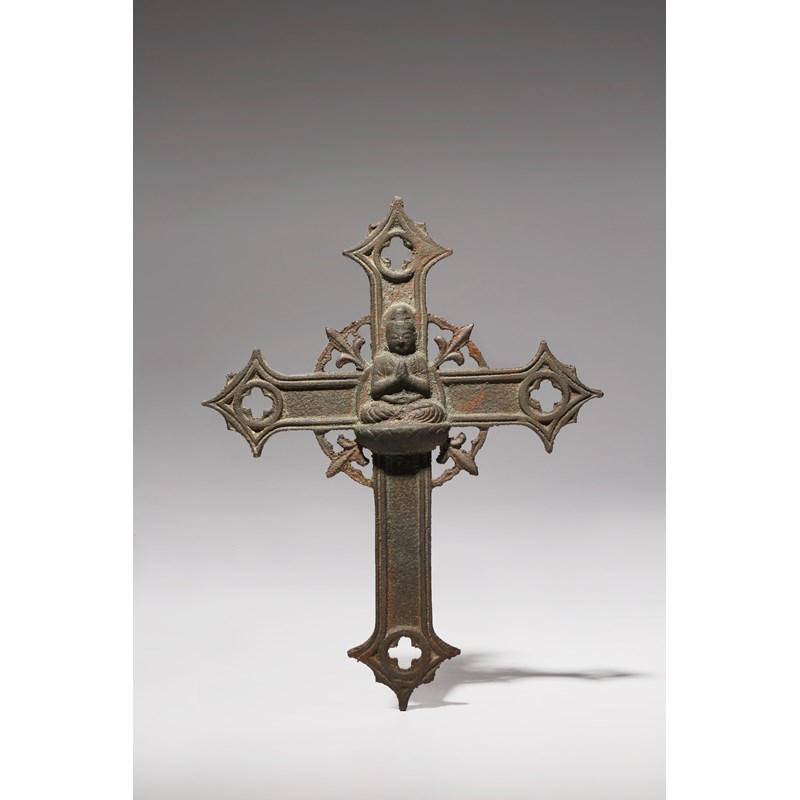Japanese Works of Art - 12 Nov 2019
A JAPANESE BRONZE CROSS WITH AMIDA NYORAI (AMIDA BUDDHA) EDO PERIOD OR LATER
A JAPANESE BRONZE CROSS WITH AMIDA NYORAI (AMIDA BUDDHA)
EDO PERIOD OR LATER, 18TH CENTURY OR LATER
The central figure seated on a lotus throne, his hands clasped together in a gesture of prayer, a circular mandorla behind him with fleur de lys-shaped ornaments, the cross with four quatrelobed apertures to the ends, 25.3cm.
See The Asian Civilisations Museum, Singapore, access. n. 2011-02283 for another example of Edo period cross with a central figure of Amida Nyorai. Also J Welsh, After the Barbarians II, Namban Works of Art for the Japanese, Portuguese and Dutch Markets, pp.278-281 n.34, where a comparable bronze cross is illustrated and discussed.
Christianity first appeared in Japan in the 16th century with the arrival of Navarrese missionary Francis Xavier (1506-1552). It quickly reached the higher strata of society, with Daimyo families such as the Satsuma clan joining the faith, partly to have access to imported goods (such as guns) Portuguese Jesuits were trading in.
Christianity was fully banned from Japan by Tokugawa after the Shimabara rebellion of 1637-38 during which Christian peasants rebelled against the Shogunate. Other factors led to the ban, including the possible involvement of Portuguese Jesuits and suspicions that converts were spies for foreign powers.
The edict outlawed the promulgation of and adherence to the religion. It also marked the beginning of a long period of anti-Christian persecutions that lasted for two and a half centuries. Sign boards such as lot 266 where set up all over the country, encouraging people to report Christians to the authorities for various financial rewards (500 pieces of silver for a priest, or 100 for an ordinary convert).
Symbols and objects used for Christian worship were destroyed or desecrated. Lot 268 is an example of this iconoclasm, with the inscriptions to the sides of the incense burner erased to hide its original use. Christian practitioners who refused to renege their faith had to go into hiding and worship in secret. Figures of Kannon, the Buddhist Goddess of Mercy, and of Amida Buddha (lot 267) were adapted to resemble Christian iconography and become the central point of focus of hidden altars. Crosses and figures of Christ (lot 269) were hidden in ordinary objects such as this fake smoking pipe.
After the Meiji restoration and the re-establishment of religious freedom, more than 30,000 secret Christians came out of hiding in the 1870s.




 Live online bidding is available via our own
Live online bidding is available via our own